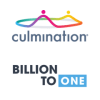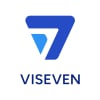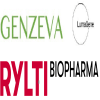SAN FRANCISCO — This year's J.P. Morgan Healthcare Conference proved to be a salve for biotech's recent woes.
Fueled by two major buyouts, shares in most drugmakers rose over the course of the four-day meeting, reversing a stock slide that weighed down the sector in the waning months of 2018.
Prospects for further dealmaking, coupled with clinical progress in oncology and other key areas, could help keep momentum riding high.
Still, the industry's problems haven't disappeared, and may even redouble in 2019 as a new Democratic House of Representatives seeks to up scrutiny on drug price increases.
A partial government shutdown adds a wrinkle, too, impacting the Food and Drug Administration's ability to review new drugs.
Winners
Loxo Oncology (and other biotechs like it)
Loxo's journey from formation to buyout was swift and, in a period of surging investment in cancer drugs, perhaps predictable.
Eli Lilly's $8 billion acquisition of Loxo, announced at the start of JPM, follows a roughly similar sized deal for Tesaro by GlaxoSmithKline and Bristol-Myers Squibb's industry-shaking buy of Celgene.
Underpinning all three is an industry-wide push into oncology, making approved cancer drugs like Loxo's Vitrakvi attractive.
Vitrakvi's particularly notable, as it's only the second drug OK'd in the U.S. to treat cancer based on the genetic makeup of a patient's tumor rather than where it resides in the body.
Lilly's offer of $235 per Loxo share represents a roughly 68% premium to the biotech's unaffected share price, and is nearly 18 times the $13 per share the biotech debuted at in its initial public offering more than four years ago.
The deal also lifted the fortunes of other biotechs developing targeted cancer therapies. Following Lilly's announcement, shares in Clovis Oncology, Blueprint Medicine, Agios and Seattle Genetics all rose.

With nearly $90 billion transacted in cancer biotech deals over the past two months, investors appear to be hoping more buyers remain.
Sage Therapeutics
Clinical readouts were few and far between at JPM. One of the standouts, though, came from Sage Therapeutics.
The neuroscience drug developer saw its share value spike on the conference's opening day as it reported positive Phase 3 data for a postpartum depression drug known as SAGE-217.
"This is exactly what we expected," Al Robichaud, Sage's chief scientific officer, told BioPharma Dive in an interview.
"The science tells us that this is the way this needs to work," he said. "And it wasn't on one discovery, on one preclinical trial, but multiple clinical trials where we've demonstrated this mechanism is applicable towards mood disorders."
The study results bolster SAGE-217's place in postpartum depression; Leerink now estimates the drug would fetch peak annual sales of up to $350 million for that indication should it gain approval.
But they're also useful elsewhere, namely for another depression drug in Sage's pipeline that is similar to SAGE-217.
The drug, brexanolone, is under review with U.S. regulators. Investors have had a few concerns about brexanolone's safety profile and path to approval, but analysts expect the SAGE-217 readout will help alleviate those.
Amarin
Amarin, months removed from a landmark trial readout for its heart drug Vascepa, was already the subject of pre-JPM speculation it could become pharma's next takeover target.
On Thursday, investors appeared ready to believe their dreams were about to come true, pushing up shares in the biotech by more than 20% Thursday on rumors that Pfizer might make a bid.
Whether or not that proves accurate, Amarin's fortunes look on the cusp of a major upswing. Earlier this year a study of Vascepa found the fish-oil derived pill drove a 25% reduction in relative heart risk versus placebo for patients already taking statin therapy.
Detailed data did invite some scrutiny, but the trial's results still stand as one of the more notable cardiology readouts in recent years.
Amarin aims to submit this quarter a supplemental New Drug Application to broaden Vascepa's label in line with the data. If approved, sales of the drug could soar.
Until then, however, company CEO John Thero can only hint.
Officially, the biotech forecasts $350 million in 2019 sales, which would still be a more than 50% jump over last year. But Thero's presentation to investors Wednesday at JPM suggested the upside could be much higher if the FDA comes through with an approval.
"We have capacity with our suppliers to support now over $1 billion in revenues," Thero said. "That's not our guidance in revenues for the coming year, but we've gotten out ahead of this and we anticipate further expanding our supply capacity for this multi-billion dollar opportunity."
Amarin's hired roughly 250 more sales representatives in preparation and Thero told investors the company could add more if Vascepa's label is widened.
Losers
Biotechs averse to acquisition
The Amarin rumors reflect how pervasive M&A was at JPM. Bristol-Myers Squibb's enormous bid to acquire Celgene the week prior made dealmaking — already a typical point of conversation at the conference — the premier topic. Eli Lilly's $8 billion purchase of Loxo Oncology on Jan. 7 furthered the narrative.
"[E]very company in this industry is up for sale," Clovis CEO Patrick Mahaffy told investors Tuesday.
Some would beg to differ.
"We don't need a pharma partner to support us. So if everybody leaves us alone in that respect, we're happy," Galapagos CEO Onno van de Stolpe said during his company's JPM presentation.
Galapagos may not get its wish, though. Pricing pressures, patent expiries and pipeline failures are threatening the bottom lines of many big drugmakers. Couple that with the recent stock de-valuation across the biotech sector, and there's reason to believe small companies with at least somewhat promising later-stage assets could see interest from a buyer.
The industry's argument that list prices don't matter
Jan. 1 brought price increases on dozens of drugs marketed by major pharmaceutical firms, including Allergan, Biogen, Bristol-Myers Squibb and Eli Lilly.
Hikes on most ranged from low single digits to just below 10%, a line in the sand drawn by a number of companies as the ceiling for their pricing actions each year.
A standard defense from industry is that increases on list prices don't reflect what patients typically pay, and are a reflection of the need to offer rebates to pharmacy benefit managers.
For example, Allergan, which took some of the higher increases relative to its peers, argued that it does not expect to realize any net benefit from its price hikes after accounting for higher rebates and discounts in 2019.
Health and Human Services Secretary Alex Azar isn't buying that argument.
"For those listening in the pharmaceutical industry: The list price increases must stop," Azar tweeted, as industry executives remained gathered in the halls of the Westin St. Francis in San Francisco.
"Anyone who hasn't spent through their deductible or has coinsurance is paying all or a percentage of the list price of the drugs they need," he added. "List prices matter."
It's not clear what new actions the administration hopes to take on this issue, but Azar appears focused on list price growth as well as the distortions created by rebates.
Not that investors in biotech and pharma were spooked. Unlike two years ago, when President Donald Trump accused drugmakers of "getting away with murder," drugmaker stocks largely stayed in the green throughout the conference.
Biotechs counting on the FDA to be open
Successfully bringing a drug to market requires management of a long list of potential risks, all of which could derail an experimental therapy in its journey to regulators' desks.
In recent weeks, biotechs have had a new risk to contend with, as a partial shutdown of the federal government has limited the activities the FDA can carry out.
Since the shutdown began on Dec. 22, for example, the agency has been unable to accept user fees associated with applications for approval of new drugs. FDA chief Scott Gottlieb has also indicated the FDA would reallocate some user fee monies for pre-market review work to post-market surveillance.
Several drugmakers, including Alkermes, Aimmune Therapeutics and AbbVie, scrambled to submit user fees and applications earlier in December ahead of the looming shutdown. Yet as the shutdown drags on, biotechs could face delays and further uncertainty.
"They are definitely not working as normal, but what they have said is that they do continue to work on the files that have paid PDUFA fees," Aimmune CEO Jayson Dallas told investors Monday.
Typically, the FDA has 60 days following a New Drug Application submission to inform the company filing whether it has accepted the application. For Aimmune, that date would fall in mid-February, but it's unclear if that will still be the case.
"Obviously this is a concern for us. We would like to make certain that we can get this through the process as quickly as we can," he added. "It's a weird, unfortunate environment that we are in."






















